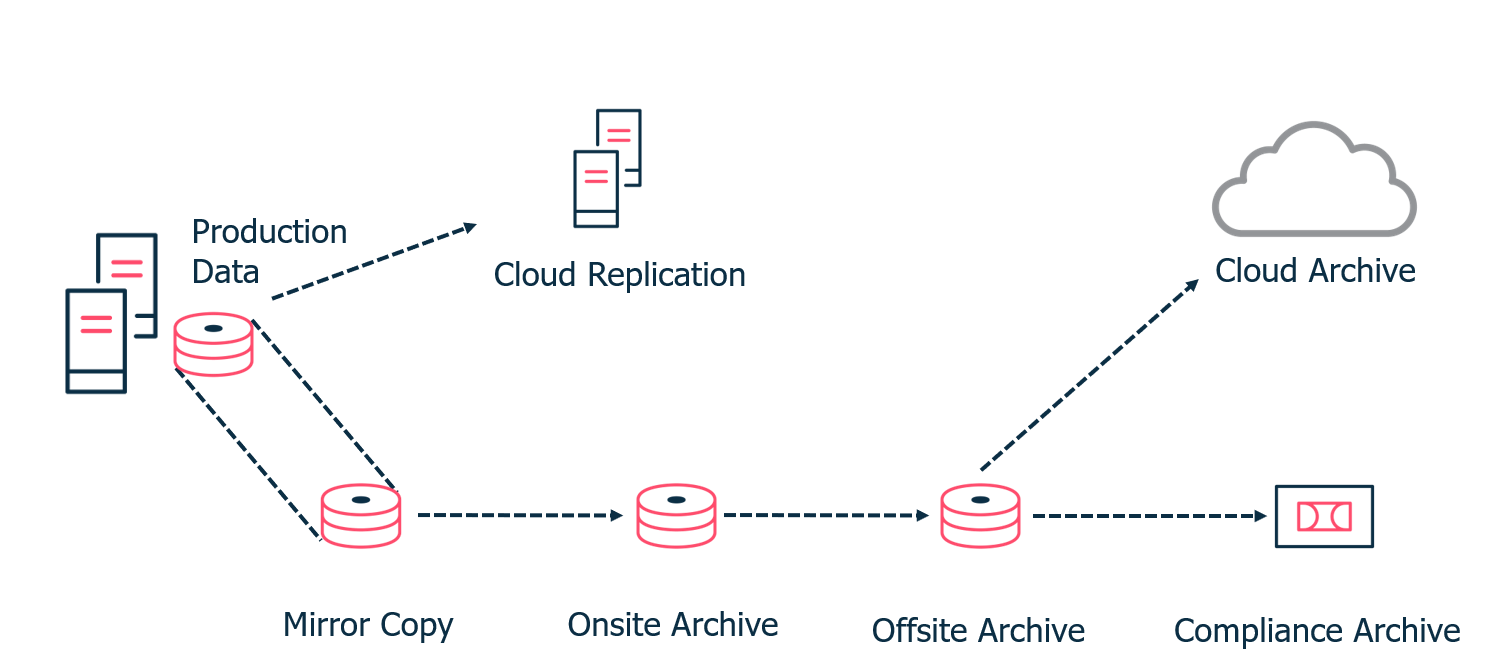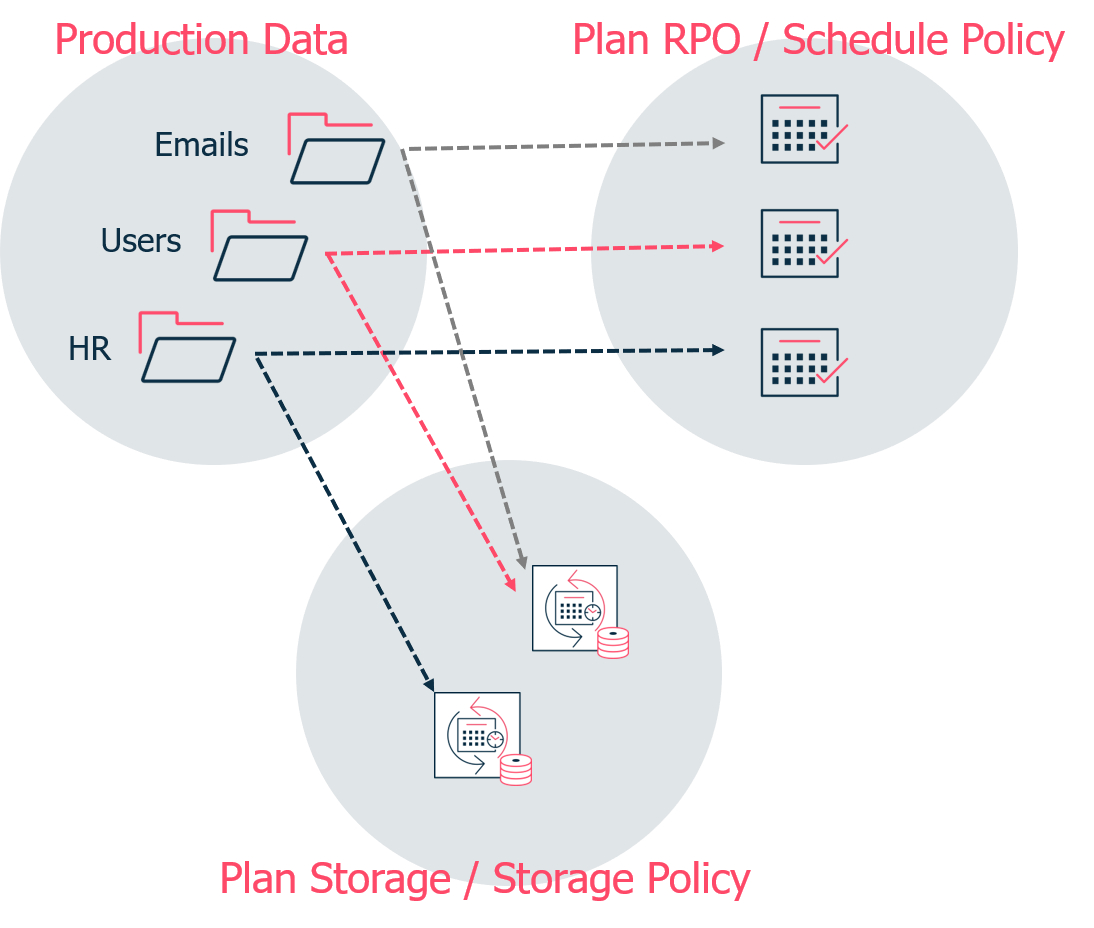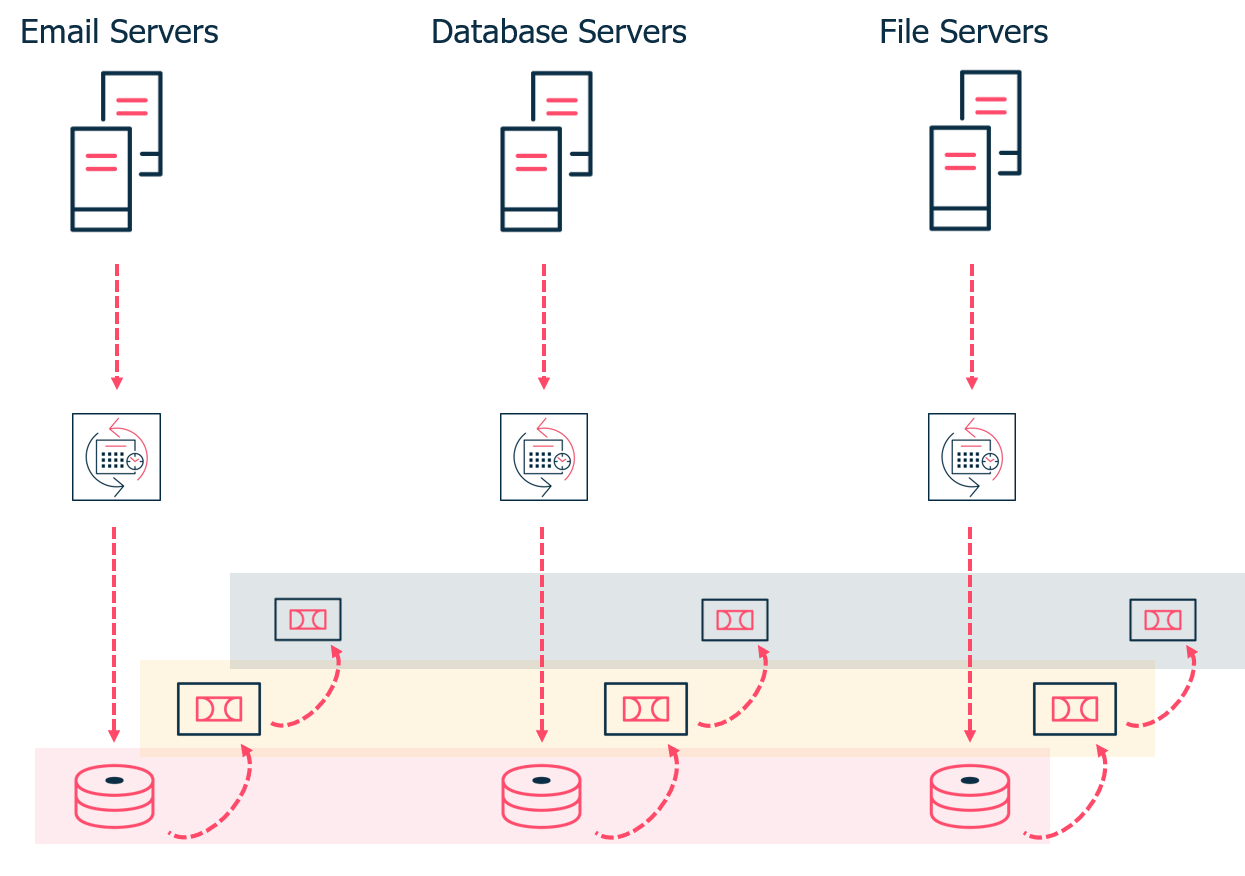Commvault
Changing the Backup Mindset

Traditional Backup Concepts
Traditionally, a backup is the process of copying data from a server to a separate storage location such as tape or disk. Backup jobs could be a full backup, differential backup or incremental backup. Each backup method would copy data from the server to the storage location. When backing up files, each backup method copies entire files. For example, a full backup copies all the files, a differential only copies files that changed since the last full, and an incremental only copies files that changed since the last backup.
Traditional full and incremental backups copy objects to a storage location
Modern Backup Concepts
Though the term 'backup' still exists, backups in the traditional sense are a thing of the past. Where traditional backup methods addressed data at the object level, such as files or email messages, modern data protection systems address data at the block level. This is made possible by application level block tracking, deduplication, and modern indexing mechanisms.
Modern backups protect data at the block level


Modern Concepts for Data Protection
The term 'data protection' best represents the comprehensive protection strategies in modern data centers. Data protection is comprised of two primary concepts:
- Data Archiving – copies data in an archived state. Data is archived to secondary storage using software that indexes and securely manages access to the protected data.
- Live Data Movement – copies data, usually at the block level, in a live state to another location. This concept includes: replicating, mirroring, vaulting, and live data synchronization.
Archiving the Backup Mindset
Since the term 'backup' implies a traditional full backup, incremental backup, or differential backup, the term 'Archive' should be used in place of the term backup, as it best represents how modern data protection functions. Archive functions as an action (verb) and a place (noun).
Archive Protection
The archive action is the process of copying blocks to protect data in an archived state, not a live state. Consider several common methods for copying blocks: replicating, mirroring, and vaulting, all perform a function of a traditional backup, but these solutions copy live blocks so they are not considered backups. With this logic, a scheduled operation to copy blocks using data protection software should not be considered a backup – rather it is an action that archives data.
The archive place is all the locations where the blocks are copied in an archived state. This includes tape, disk, and cloud copies. Blocks are copied to various locations to mitigate risk, adhere to compliance requirements, and to provide quick and seamless access to data. This is made possible by intelligent tiered indexing methods. All of the places in which blocks are copied to are each an archive location.
Live Block Movement
A comprehensive modern data protection solution includes live block movement using replication and mirroring, as well as archiving data to tiered storage. The live block movement provides the best RTO and RPO values required in today's business world, but are more susceptible to data corruption or ransomware attacks. Archive copies have longer RTO and RPO values but mitigate the risk associated with live block movement and also provide long term retention strategies to meet business and compliance requirements. All modern data protection strategies must include both live block movement and archive protection.
Comprehensive data protection includes mirroring, replicating and archiving data to meet business needs


Policy Based Data Management
Commvault® software logically addresses data and data protection methods within a CommCell® environment. Data in the production environment is defined in logical containers called subclients. Each of these subclients can be protected and managed independently. The subclients are then scheduled independently or associated with a schedule policy, which determines when and how the subclients are protected. Where the subclients are protected to and how long they are retained for is determined in the storage policy. All of these components can be configured individually and then linked together through configuration options within the CommCell® console.
Policy-based data management uses subclients, storage policies, and schedule policies to manage protected data


Three Dimensional Data Management
The concept of Three Dimensional Data Management allows for data to be protected, copied, and managed logically. Data is backed up from the production environment only once, and then additional copies can be created for off-site storage. This 'Copy Once Reuse Extensively' (CORE) concept that Commvault software uses provides more flexible protection strategies, more efficient media management, and lowers the total cost of ownership.
There are three dimensions for data management:
- First Dimension – is the primary backup of data from the production environment is conducted during normal protection windows.
- Second Dimension – is an additional copy of the data generated for off-site storage.
- Third Dimension – takes traditional data storage to the next level. It provides the ability to logically manage data independent of its physical location. Logical management of business data is accomplished by grouping production data into logical units called subclients. Each subclient becomes a managed object within the Commvault protected environment allowing you to customize the protection of the subclient data regardless of which physical server it originated from.
Three-dimensional data management high level concept

The power of three dimensional data protection and policy-based data management allows data with like retention requirements to be grouped together. Sending journal email, financial records, and legal documents off-site for 10 years consolidated on a single tape is much more efficient than sending an email server, database server, and document server all on separate tapes off-site for 10 years.
Copyright © 2021 Commvault | All Rights Reserved.
